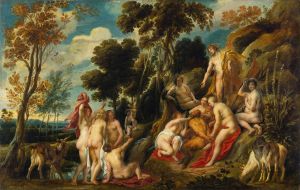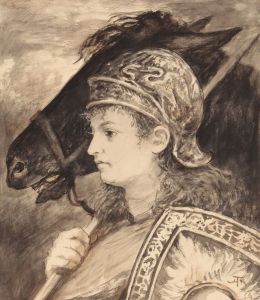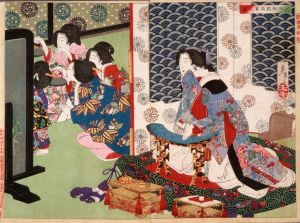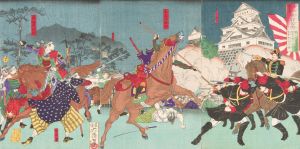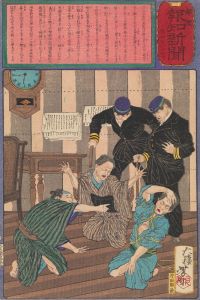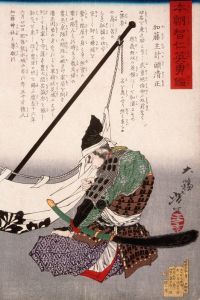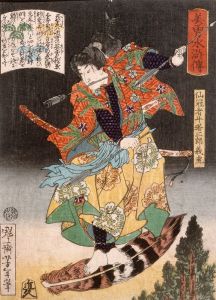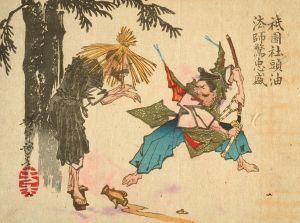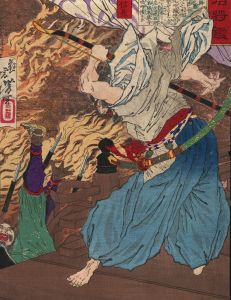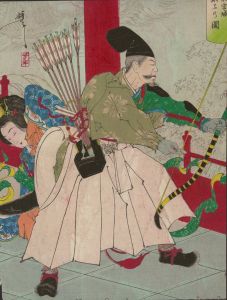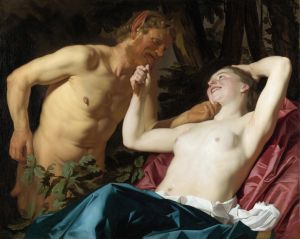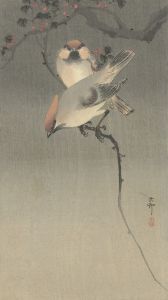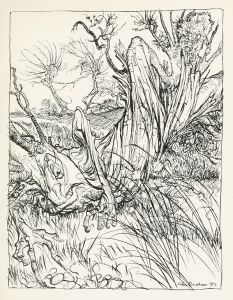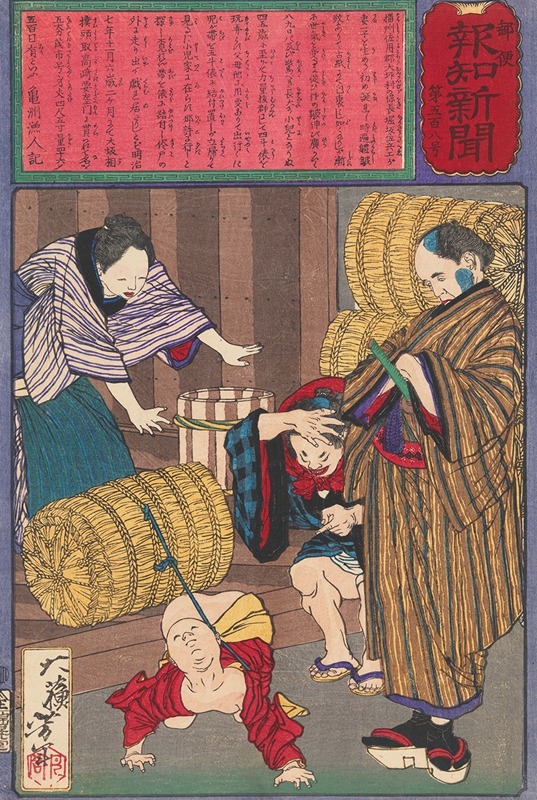
The Child of Horisaka Sahei Tied to a Rice Bale
A hand-painted replica of Tsukioka Yoshitoshi’s masterpiece The Child of Horisaka Sahei Tied to a Rice Bale, meticulously crafted by professional artists to capture the true essence of the original. Each piece is created with museum-quality canvas and rare mineral pigments, carefully painted by experienced artists with delicate brushstrokes and rich, layered colors to perfectly recreate the texture of the original artwork. Unlike machine-printed reproductions, this hand-painted version brings the painting to life, infused with the artist’s emotions and skill in every stroke. Whether for personal collection or home decoration, it instantly elevates the artistic atmosphere of any space.
Tsukioka Yoshitoshi (1839–1892) was a prominent Japanese ukiyo-e artist, known for his innovative and dramatic style, which often depicted historical scenes, folklore, and the supernatural. One of his notable works is "The Child of Horisaka Sahei Tied to a Rice Bale," a woodblock print that is part of his series "New Forms of Thirty-Six Ghosts" (Shinkei Sanjūrokkaisen), created between 1889 and 1892. This series is celebrated for its imaginative portrayal of ghostly and supernatural themes, reflecting Yoshitoshi's fascination with the mysterious and the macabre.
"The Child of Horisaka Sahei Tied to a Rice Bale" illustrates a story from Japanese folklore or historical legend, a common source of inspiration for Yoshitoshi's work. The print depicts a dramatic scene where a child is bound to a rice bale, a situation that evokes a sense of tension and impending danger. Yoshitoshi's skillful use of color, line, and composition enhances the emotional impact of the scene, drawing the viewer into the narrative.
Yoshitoshi's work during this period is characterized by a blend of traditional ukiyo-e techniques and a modern sensibility, which was influenced by the changing cultural landscape of Japan during the Meiji era. This era was marked by rapid modernization and Westernization, which had a significant impact on Japanese art and culture. Yoshitoshi managed to maintain the essence of traditional Japanese art while incorporating new elements that appealed to contemporary audiences.
In "The Child of Horisaka Sahei Tied to a Rice Bale," Yoshitoshi employs a dynamic composition that captures the viewer's attention. The use of vivid colors and intricate details is typical of his later works, showcasing his mastery of the woodblock printing technique. The emotional intensity of the scene is heightened by the expressions and postures of the characters, a testament to Yoshitoshi's ability to convey complex narratives through visual art.
Yoshitoshi's "New Forms of Thirty-Six Ghosts" series, including this particular print, is considered one of his masterpieces and a significant contribution to the ukiyo-e genre. The series reflects his deep interest in the supernatural and the psychological, themes that resonate with audiences both in his time and today. His work is often seen as a bridge between traditional Japanese art and the modern era, capturing the complexities of a society in transition.
Despite facing personal and professional challenges throughout his life, including mental health issues and financial difficulties, Yoshitoshi's legacy endures. His prints are highly regarded for their artistic quality and historical significance, and they continue to be studied and appreciated by art historians and enthusiasts worldwide.
"The Child of Horisaka Sahei Tied to a Rice Bale" remains an intriguing example of Yoshitoshi's ability to blend storytelling with visual artistry, creating works that are both beautiful and thought-provoking. Through this and other prints in the series, Yoshitoshi has left an indelible mark on the world of Japanese art, influencing generations of artists and contributing to the enduring appeal of ukiyo-e.






